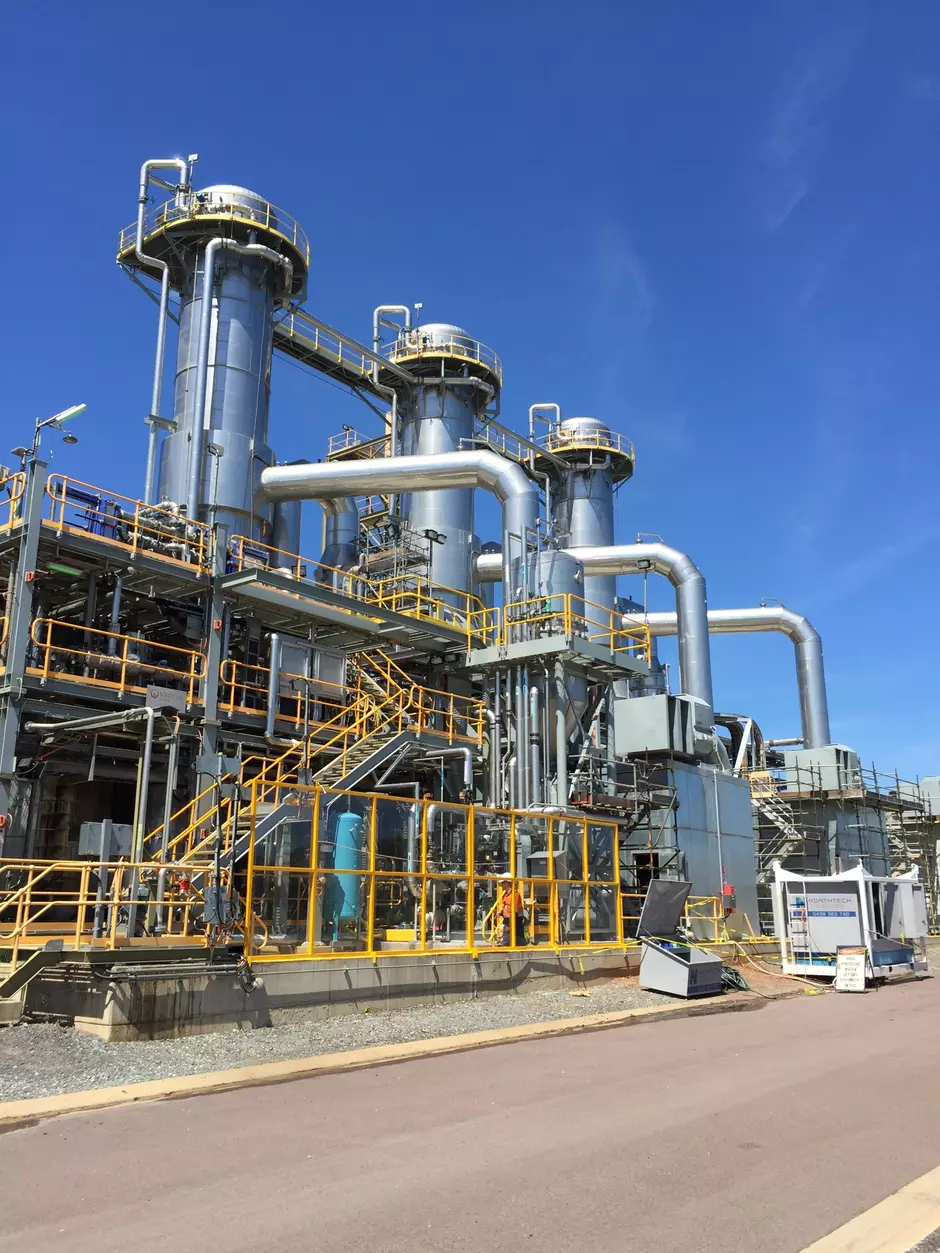To help Chlor-Alkali producers achieve high-purity, low-leakage concentrated brine prior to electrolysis by membrane technology, Veolia provides filters and ion-exchange softeners specially designed for maximum performance. They are constructed of engineered materials with special surface preparations that achieve hardness levels of less than or equal to 20 ppb as Ca++.
To efficiently produce chlorine and caustic by electrolysis, higher purity brine free of undesirable solids and ions is of the utmost importance. An effective brine purification process that avoids any objectionable constituents (e.g. sulphate anions, cations of Ca, Mg, Ba and metals) is essential to maximize the efficiency of the electrolysis of sodium chloride (NaCl). Membrane electrolytic cells are particularly sensitive to fouling with alkaline impurities that shorten the membrane life.
The processes that purify the brine to a maximum degree involve chemical precipitation followed by primary and polish filtration techniques and high-performance ion exchange softening. These steps remove all of the hardness associated with suspended and dissolved solids to less than 20 parts per billion (ppb).
The majority of the hardness is removed using chemical precipitation which involves:
- Caustic addition that precipitates magnesium ions as magnesium hydroxide
- Soda ash addition that precipitates calcium as calcium carbonate.
The chemical precipitation step reduces the hardness from approximately 200 ppm to less than 30 ppm as calcium. The particulate matter that has not settled completely is removed by a primary filtration step that handles high solids loading and potential clarifier upsets.

Next, a polishing step follows with Auto-Shok™ pressure filtration, a candle filter that has tubular elements covered with a fine durable outer cover (e.g. polypropylene cloth) coated with a layer of cellulose filter aid that achieves submicron filtration performance without contributing to the silica loading in the brine. Body feed with cellulose is used to build and keep a filtering cake that is porous and doesn’t blind. An effective cleaning cycle that uses a backpulsing technique with filtered brine releases the energy necessary to create a rapid back flow of brine and blow the cake from the tube surface.
When the brine pretreatment ahead of the electrolytic process does not include a clarifier, the precipitation step is completed in a flocculation tank and the brine is then pumped for submicron filtration. An alternative membrane filter cloth is used in Auto-Pulse™ technology, a filter that uses backpulse polymeric sleeves to filter the brine without the need for precoat or body feed. These sleeves are easily cleaned through the same process of backpulsing the brine with the compressed air section above the filtered brine. Since there is no cellulose added to the cake, this process allows for a greater content of solids to be filtered by the tubes which can operate with incoming brines with up to 1% of solids content.
Both Auto-Shok™ and Auto-Pulse™ polishing filters reduce the solids associated with hardness to less than 0.5 ppm and bring excellent protection to brine softeners. However, further treatment is required as the growing production of chlorine and caustic utilizing membrane cell electrolyzer technology has resulted in the need for higher purity brine with hardness not exceeding 20 parts per billion (ppb).
The final step in treating the saturated brine is the removal of residual dissolved hardness by ion exchange technology using dedicated cation resins with chelated functional ties. The typical configuration is that of a three-column system with a primary, a secondary and a third functioning as a polishing column where the resins in each column are in the sodium form operating in a merry-go-round manner. To ensure maximum brine quality, the last column to be regenerated is always brought back on stream as the polishing column to act as a safeguard without concern for approaching exhaustion. Alternatively, a two-column system can also be operated similarly except during regenerations when the operation would only be single-pass. Regeneration of the exhausted resin is twofold. First, hydrochloric acid is used to strip the calcium and magnesium ions from the resin and, second, sodium hydroxide is used to return the chelated resin to the sodium form.
The final step in treating the saturated brine is the removal of residual dissolved hardness by ion exchange technology using dedicated cation resins with chelated functional ties. The typical configuration is that of a three-column system with a primary, a secondary and a third functioning as a polishing column where the resins in each column are in the sodium form operating in a merry-go-round manner.
To ensure maximum brine quality, the last column to be regenerated is always brought back on stream as the polishing column to act as a safeguard without concern for approaching exhaustion. Alternatively, a two-column system can also be operated similarly except during regenerations when the operation would only be single-pass.
Regeneration of the exhausted resin is twofold. First, hydrochloric acid is used to strip the calcium and magnesium ions from the resin and, second, sodium hydroxide is used to return the chelated resin to the sodium form.



